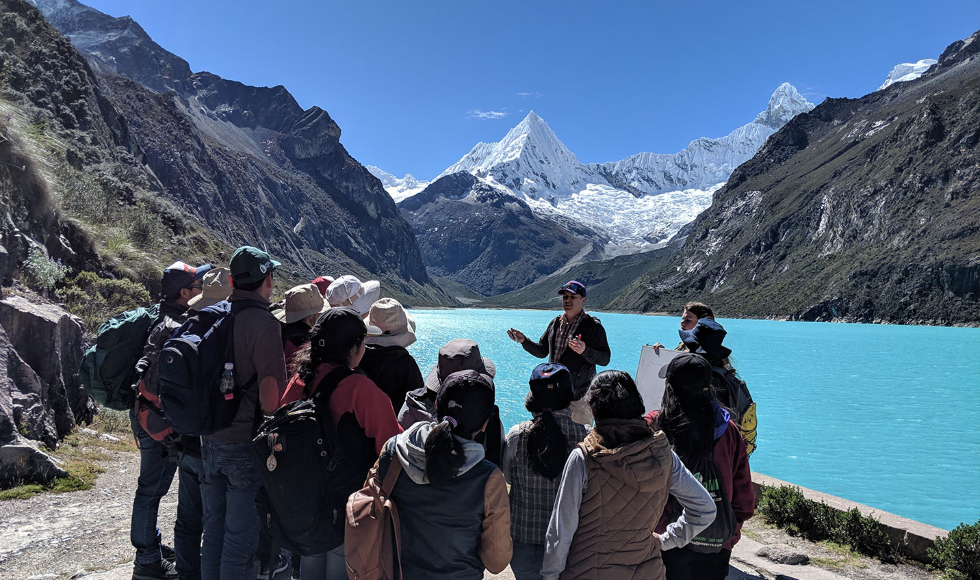McMaster researchers work with scientists in Peru to unlock glaciers’ secrets

Glaciers in the tropics?
While glaciers aren’t usually associated with tropical climates, these giant ice formations exist in abundance throughout South America. In fact, Peru holds approximately 70 per cent of the world’s tropical glaciers. These glaciers are defined as having two very distinct seasons — a dry one and a wet one.
For the past three years, the Glacial Sedimentology Research Lab, led by Dr. Carolyn Eyles of McMaster’s School of Geography & Earth Sciences, has worked in Peru’s Cordillera Blanca mountain range studying tropical glaciers and the sediments and landforms that they have left behind.
At the beginning of May, a small group from the research lab, led by Arts & Science instructor Dr. John Maclachlan, went to Huaraz, Peru to lead a five-day course that trained Peruvian scientists in glacial sedimentology and geomorphology.
This trip is just one of the many research and academic projects that are currently done in collaboration with Peru’s National Institute for Research in Glaciers and Mountain Ecosystems (INAIGEM).
INAIGEM’s mandate is to monitor and research the country’s glaciers with the objective of ensuring that the resources that mountain environments provide to the populace is sustainably managed for generations to come. A Memorandum of Understanding, facilitated by McMaster’s Office of International Affairs, was signed in September 2016 to help enable various research and academic endeavors.
Twenty-five Peruvian scientists travelled from across the country to participate in the McMaster-led course, which comprised two and a half days in the classroom, where the McMaster team, which included PhD students Rodrigo Narro Perez and Rebecca Lee, laid the theoretical foundations of glacial sedimentology.
The second half of the course took place in the field locations of Lakes Parón and Llaca. The course material incorporated aspects of a fourth-year Earth Sciences course (EARTH SC 4G03 Glacial Sedimentology and Environments) taught by Maclachlan and applied it to the context of the local geology.
The course focused on understanding how glacial sediments can be analyzed to understand past glacial behaviour and past environmental processes.
This is important for INAIGEM and the Peruvian scientists because, while many of Peru’s glaciers provide important water resources for the communities around them, climate change is causing them to retreat at alarming rates. In the Cordillera Blanca alone, there has been a decrease in glacial extent by over 40 per cent in the past 50 years.
“Leading this course was a great experience,” Maclachlan says. “I particularly enjoyed interacting with the participants. The quality of participants was excellent — they were able to comprehend the concepts in a short amount of time and successfully perform field work.”
Maclachlan says he looks forward to future McMaster-INAIGEM collaborations.


